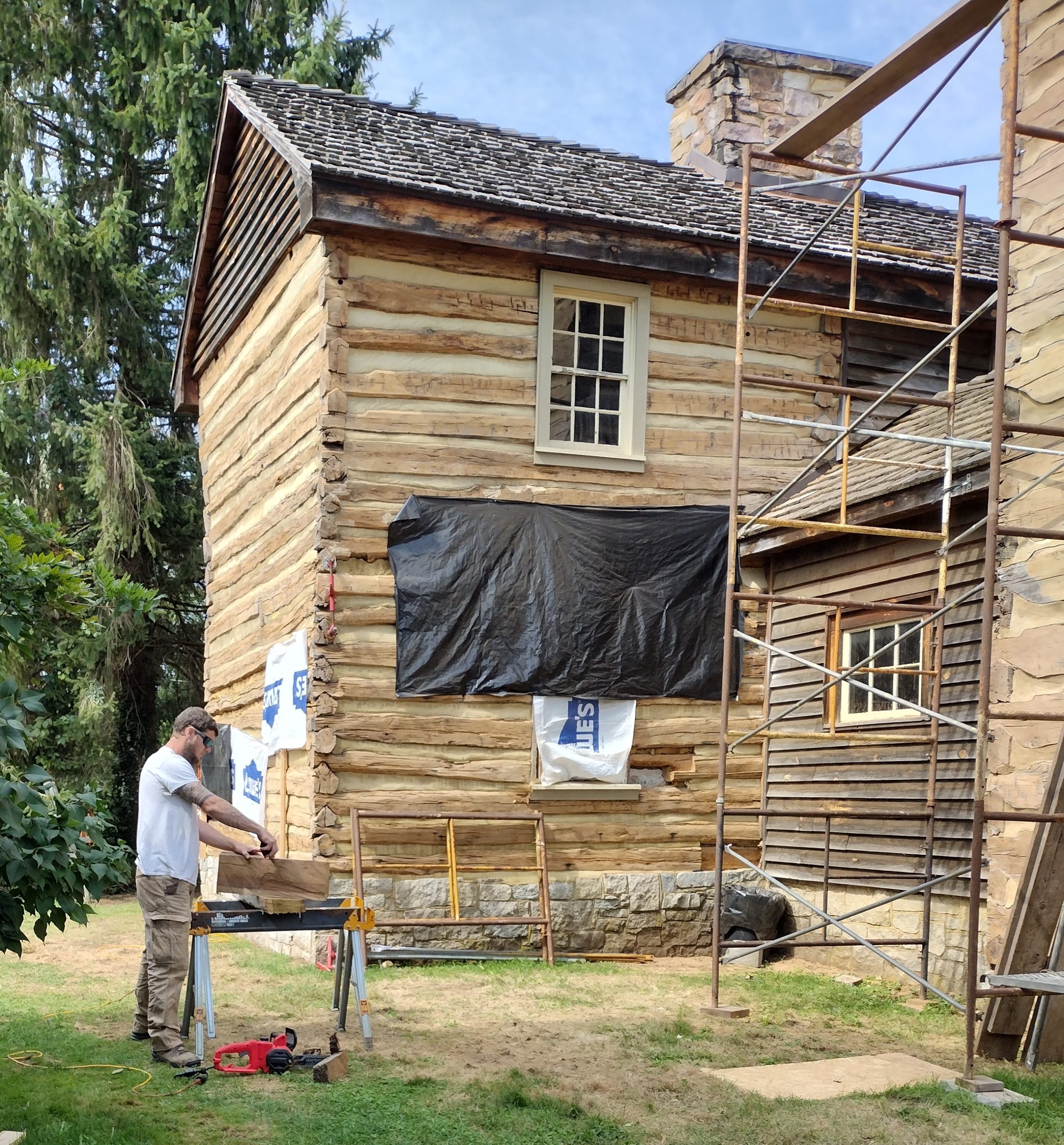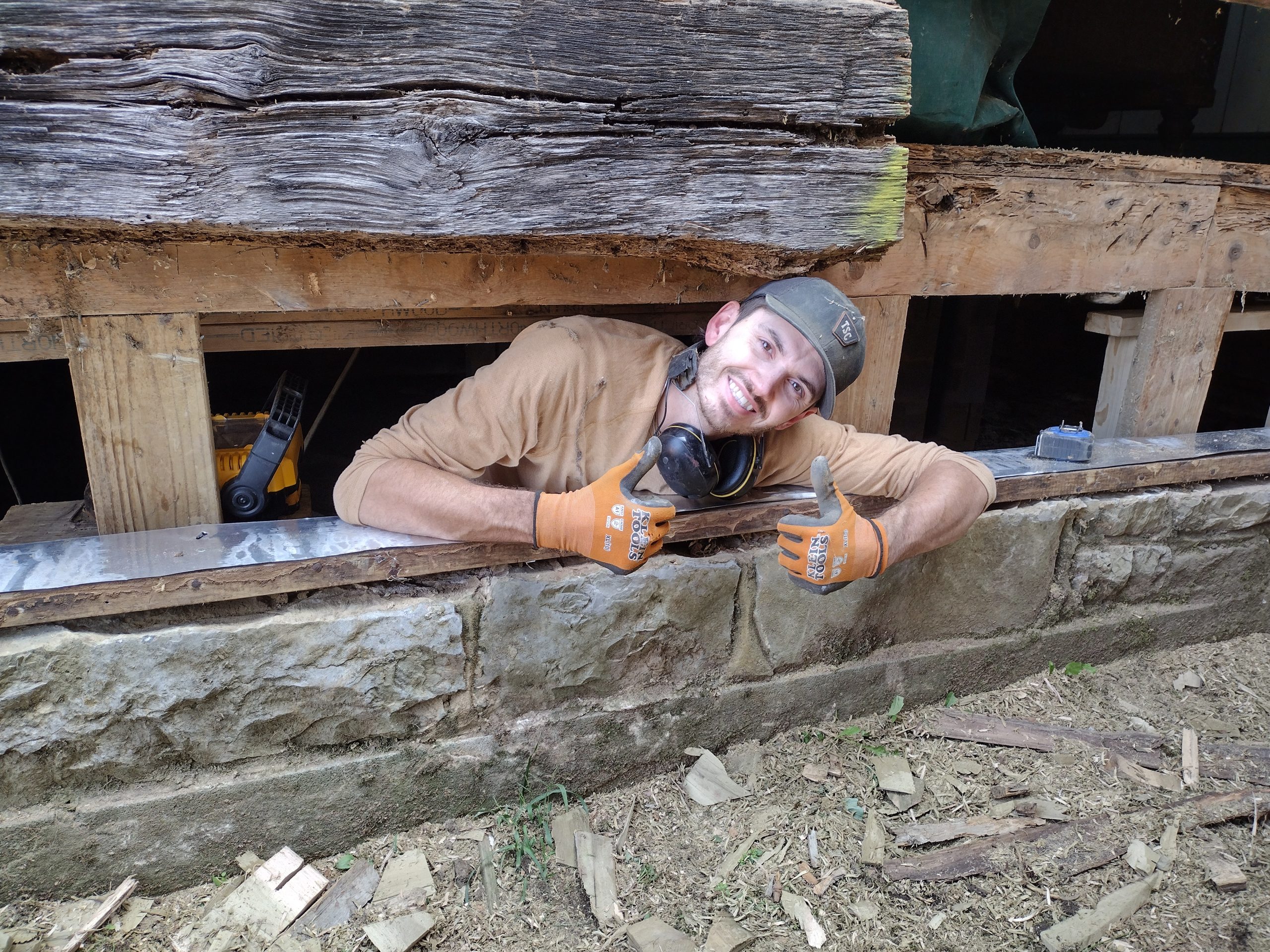

By Toni Ogden
The Monroe County Historical Society expects to complete restoration work on two of its historic structures before Christmas. These buildings located in Union are in themselves important artifacts in the society’s collection. Additionally, they hold MCHSs significant collection of local items. Unfortunately, as happens with many old log houses, interior damage from moisture and insects can go unnoticed until there is a crisis requiring major funds to remedy.
The Clark-Wiseman house which faces Main Street had been built to conform to Union’s first zoning ordinances established in the year 1799. It was slated for demolition but offered to MCHS; volunteers moved it a short distance from its original location. The Owen Neel house, circa 1790, connected to the town house by a short hyphen, is an important example of a settler’s home. It was donated to the historical society and moved from Gap Mills to Union.
The Wiseman/Neel houses do not qualify for state or federal preservation grants because they were moved from their original sites – a good thing as otherwise they would have been lost to the county’s history. Fortunately, financial help has come from the Seneca Trail Charitable Foundation. The late Chuck Lewis, as president of the organization and a local historian in his own right, was instrumental in directing funding to assist area non-profit historical societies in their mission to preserve their local history. A few years ago, when a new roof was needed for the Clark Wiseman house, STCF came to the rescue. And now, their generosity is making possible the major restoration of both log structures.
Tanner Farnack, who has a deep appreciation for log buildings, was delighted to be given the opportunity to save these two. The fact that the Wiseman/Neel houses are not listed on the National Register of Historic Places means that Tanner is free to make modifications to stabilize them for years to come. A rotten sill under the Clark Wiseman house and a few other logs are being replaced. The round Neel cabin logs, typical of earliest homes, have been shaved flat to eliminate the spaces where water and insects have long collected. The buildings were treated for insects and Tanner will apply materials to strengthen and protect the wood for the future. And finally fresh chinking will keep out the birds, bugs and elements.
It’s been sad to have to turn away visitors who want to look through the houses. They are true jewels of the museum complex and full of local artifacts with stories to tell. We look forward to celebrating and sharing these precious community resources once again when the museums reopen on Farmers Day in 2024.


